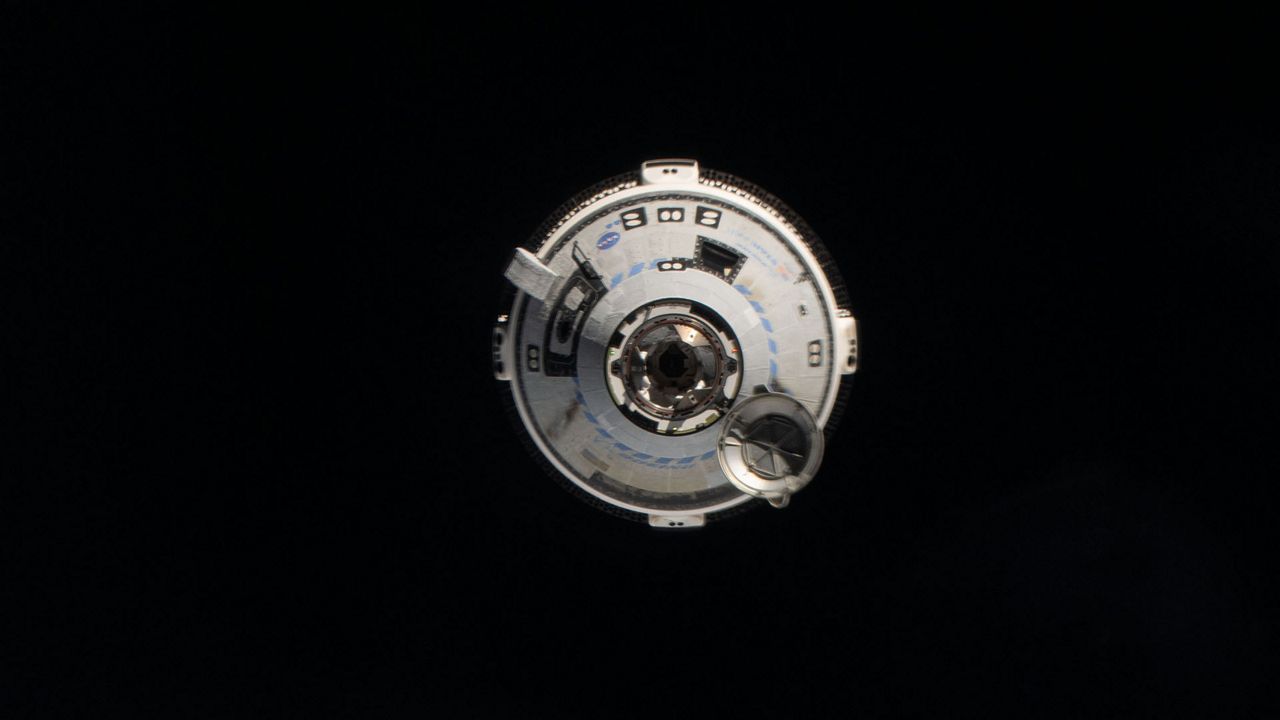CAPE CANAVERAL SPACE FORCE STATION — Both NASA and Boeing announced a new return date for the maiden crewed Starliner mission during a teleconference on Tuesday afternoon.
What You Need To Know
- Officials are now looking at a return date of Wednesday, June 26
- Helium leaks and other problems with Starliner were discussed during the teleconference
- NASA and Boeing officials answer Spectrum News' question about the need for another uncrewed test flight
NASA’s Commercial Crew Program Manager Steve Stich said officials are moving the return of Boeing’s Starliner spacecraft from Saturday, June 22, to Wednesday, June 26.
The Boeing Crew Flight Test mission will undock from the International Space Station on Tuesday, June 25, and Starliner will return NASA astronauts Cmdr. Barry “Butch” Wilmore and pilot Sunita “Suni” Williams on Wednesday.
The pair will land at White Sands Space Harbor in New Mexico at 4:51 a.m. ET.
During the teleconference, officials with both NASA and Boeing talked about the issues that have plagued the Starliner mission.
Since the first launch attempt last month, the mission has been hindered with issues, most notably multiple helium leaks.
During the launch on June 5, NASA was aware of one helium leak in the flange of the spacecraft’s service module’s thruster system, which is believed to be caused from a faulty seal.
Once Starliner docked with the ISS, NASA officials said there were additional leaks, bringing the total to four.
Last week NASA announced that there are actually five helium leaks. Stich said that with the extra time Starliner has while docked on the ISS’s Harmony module, teams will have more time to go over the data being collected.
He did reveal that the leak rates have slowed down and there is enough helium for the return trip home.
Stich said Starliner needs seven hours of helium for the return trip home and since the helium leaks have slowed down, there is more than 70 hours’ worth.
Teams back on Earth are poking holes in seals like the ones on the Starliner to test the leak rates.
Stich also shared that the helium leaks may have a connection with the aft thrusters. Five of the Starliner’s aft reaction control system thrusters that were used to maneuver the craft to the ISS failed before docking. After doing a hot-fire test, four of the five were re-selected.
The one that failed to be re-selected will not be hot fired again and teams are getting an unusual reading from it, he shared.
“We feel confident with the (rest of) the thrusters,” Stich said, adding that the team is looking at the data collected.
The extra time is important for team members to study the leaks, because Starliner’s service module will detach from the crew module and burn up during re-entry, Stich shared.
Another issue that was revealed in the Starliner’s service module is that one of the reaction control system thruster’s oxidizer isolation valve, which is a fuel valve, is not closing all the way.
However, Stich stated it is not a big concern.
“We know how to manage it,” he said.
During the teleconference, Spectrum News asked if Boeing and NASA will consider one more uncrewed flight of the Starliner to make sure all the issues have been resolved before the crewed Starliner 1 mission in 2025.
“Mark (Nappi) and I haven’t talked about the next steps,” Stich answered, saying the teams know where the potential sources of the leaks are. “It may take some time to go figure out where all those sources are and how much leakage could happen in each of those multiple thruster firings.”
He added that he thinks the teams can do all that work on the ground without the need of an uncrewed flight test.
Mark Nappi, vice president and program manager of Boeing’s Commercial Crew Program, agreed with Stich.
“I agree with Steve. I characterize these problems as learning and additional fine-tuning that we need to do to the vehicle in order to get to a certification for our vehicle. I don’t see them as 'safety-of-flight' types of issues that we would have to go fly an uncrewed vehicle to further demonstrate the system.”
During the teleconference, Nappi said that out of the 87 objectives that Starliner needs to perform for its first crewed mission, 77 have been completed and the rest will get done during the undocking and re-entry phase of the mission.
Stich stressed that NASA is confident that the Starliner is safe to return the pair of astronauts, who he said “love” the spacecraft.
This mission is part of NASA’s Commercial Crew Program, which is designed to work with American aerospace companies to build spacecraft and rockets to send equipment, technology and astronauts from American soil.




